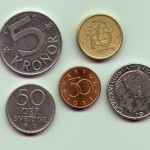Australian dollar edged lower against the greenback on Monday, as the budget deadlock in the United States pressured demand for high-yielding currencies, such as the Aussie.
AUD/USD fell to a session low at 0.9391 at 7:05 GMT, after which consolidation followed at 0.9395, losing 0.42% for the day. Support was likely to be received at October 3rd low, 0.9367, while resistance was to be met at September 19th high, 0.9524.
On Sunday Republican House Speaker John Boehner said that the House will not support bills in favor of a complete re-activation of the government or raise the US debt limit unless agreement on spending cuts with the Democrats was reached.
Riskier currencies, such as the Aussie, lost appeal, as the partial government shutdown in the United States entered its second week. “On the 17th, we run out of our ability to borrow, and Congress is playing with fire,” Treasury Secretary Jacob Lew said on CNN’s “State of the Union” on Monday. “If they don’t extend the debt limit, we have a very, very short window of time before those scenarios start to be played out. If the United States government, for the first time in its history, chooses not to pay its bills on time, we will be in default”. However, Jacob Lew did not define a specific date, when the nation might plunge into default, but according to estimations by the US Treasury, the debt ceiling was expected to be reached no later than October 17th. On the other hand, the United States will have cash at the amount of 30 billion USD and it will be insufficient to meet expenditures that can reach as high as 60 billion USD in subsequent days.
In addition, the delayed economic reports on US unemployment rate and non-farm payrolls for September may deepen the uncertainty over Federal Reserve Bank’s decision regarding the monthly pace of its stimulus program. No new dates for the release of these indicators were set yet.
Meanwhile, official data showed that activity in Australian sector of construction reached its highest level in 3.5 years in September, as this supported the outlook over the continuing recovery of Australian resource-oriented economy. According to data by the Australian Industry Group (AIG), the Australian performance of construction index (PCI) rose 3.9 points to reach a reading of 47.6 in September, after in August the index stood at 43.7. However, this indicator still remained below the key level of 50.0, which separates contraction from expansion. Construction activity has been favored by the recovering housing market in the country. Economy was still in need of re-balancing, after investment expenditures in the mining sector had hit record levels in the past.
Elsewhere, the Australian dollar was lower against the euro, with EUR/AUD cross advancing 0.64% for the day to trade at 1.4463 at 8:25 GMT. AUD/NZD pair was gaining 0.20% to trade at 1.1361 at 8:26 GMT.





